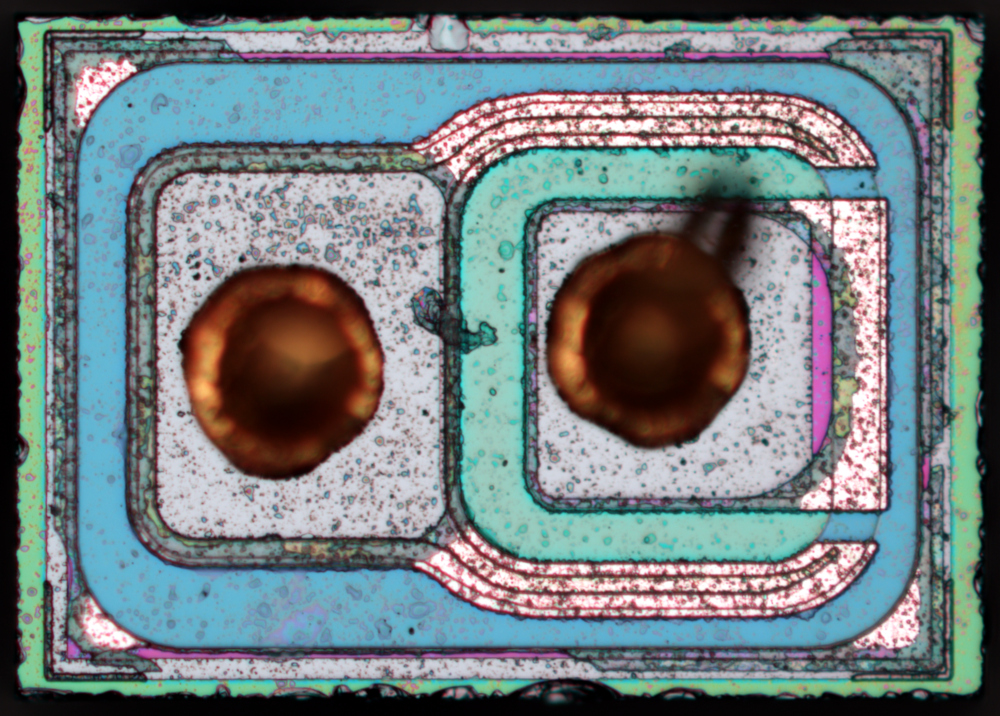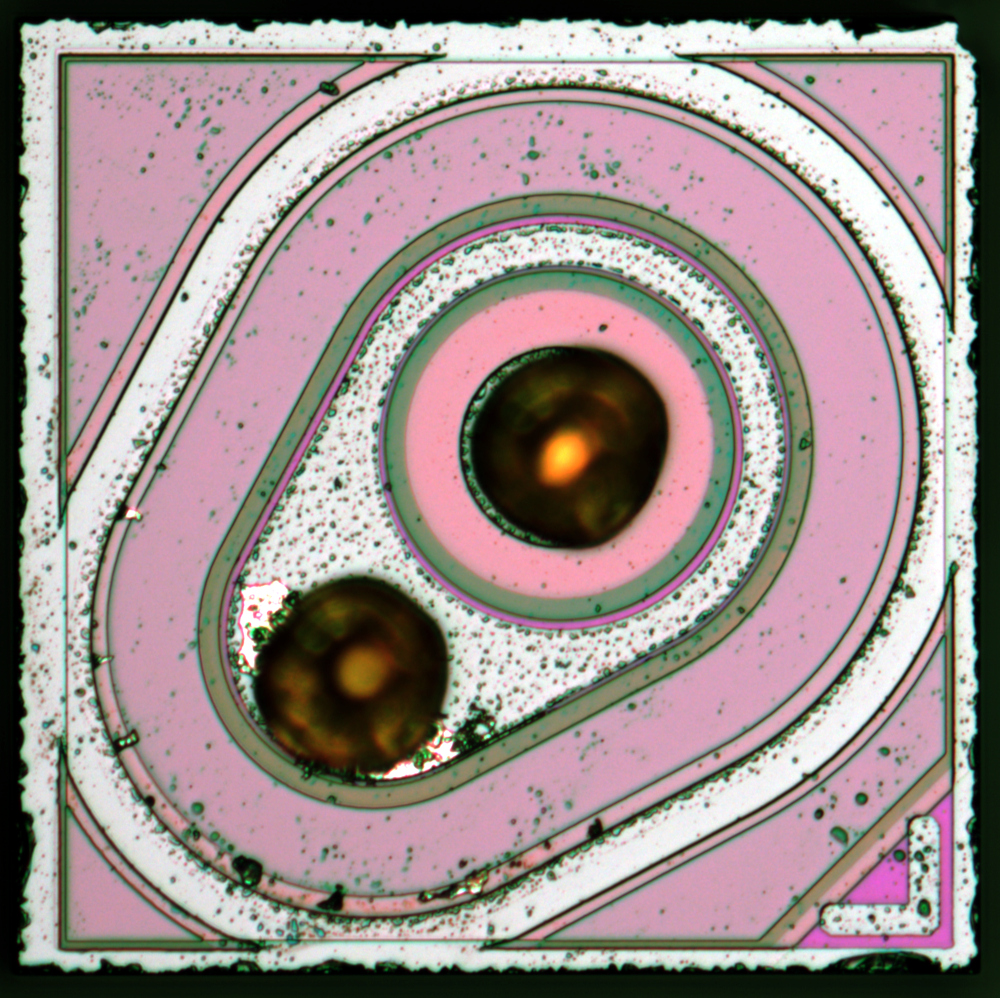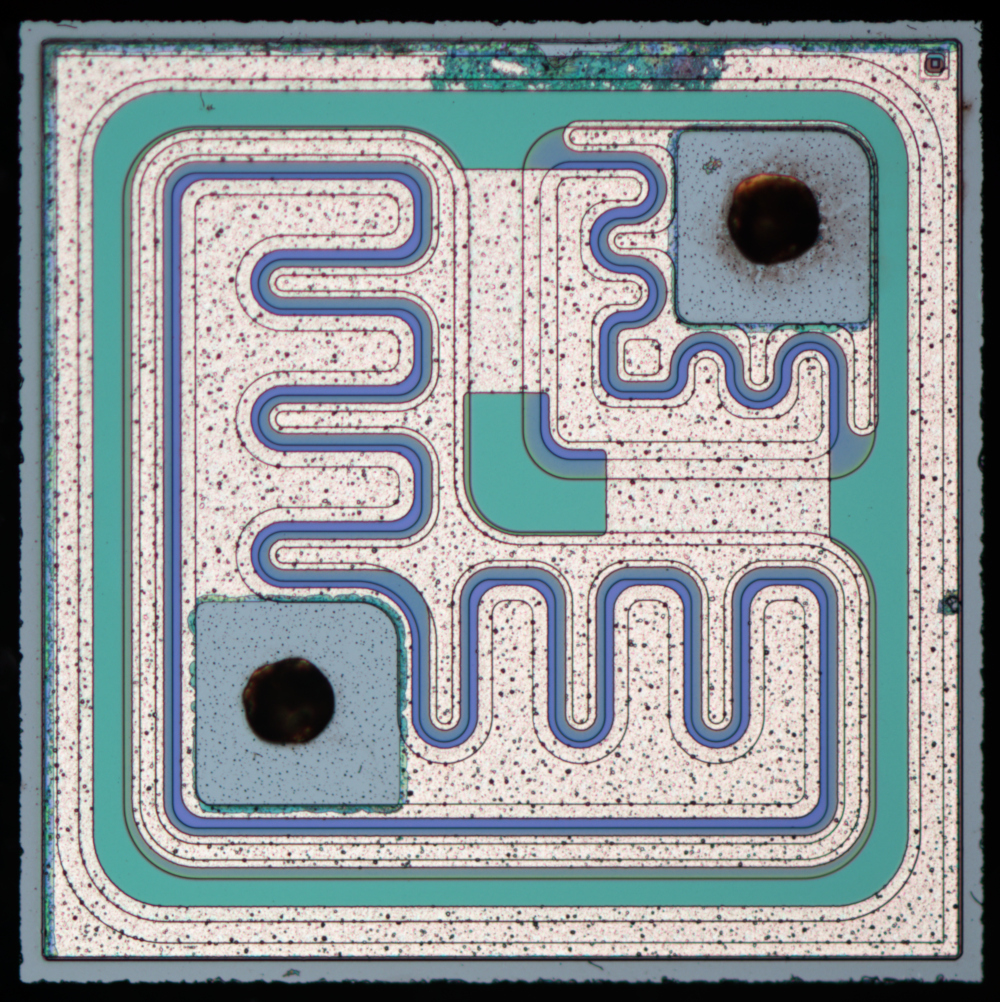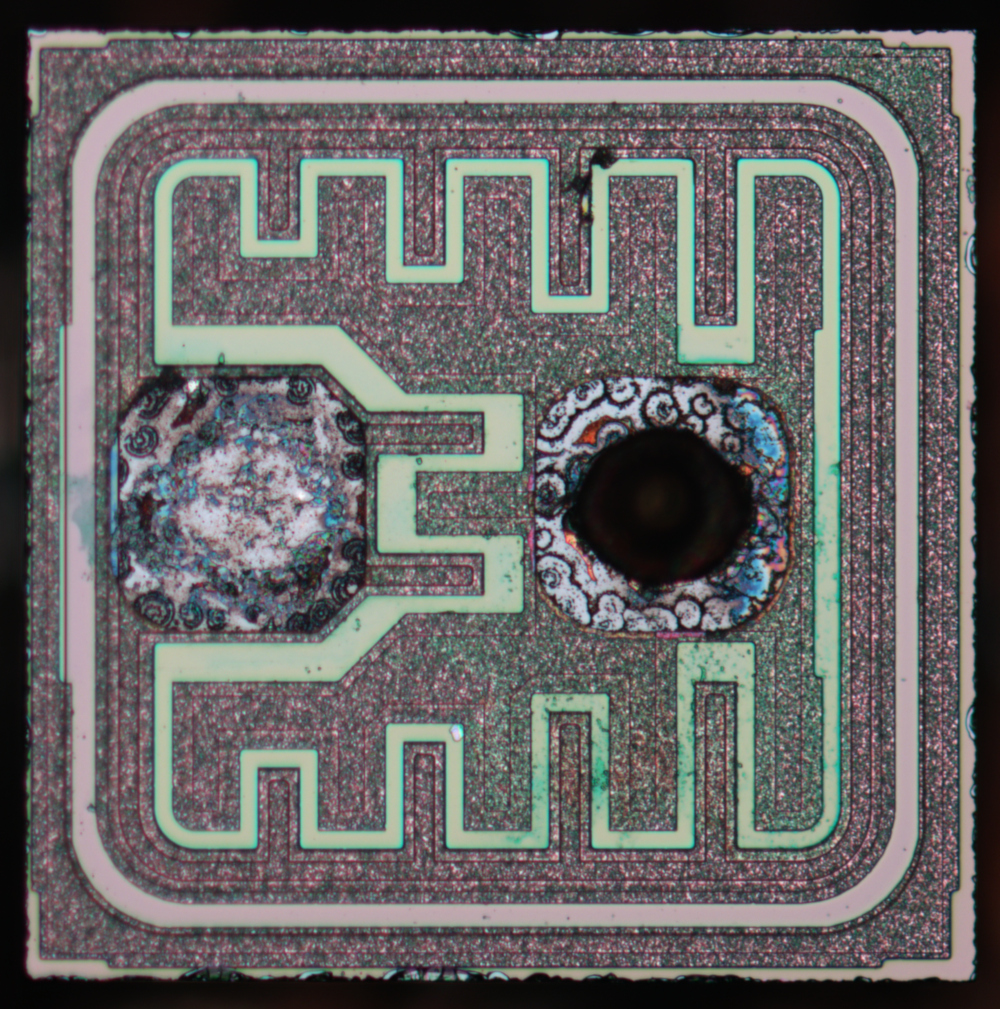August 25, 2018
August 23, 2018
Linear LT1115 - low-noise opamp : weekend die-shot
Linear LT1115 is a low-noise, low distortion opamp with 10V/µs slew rate. Largest integrated capacitors area on an opamp die we've ever seen.Die size 2861x2532 µm.
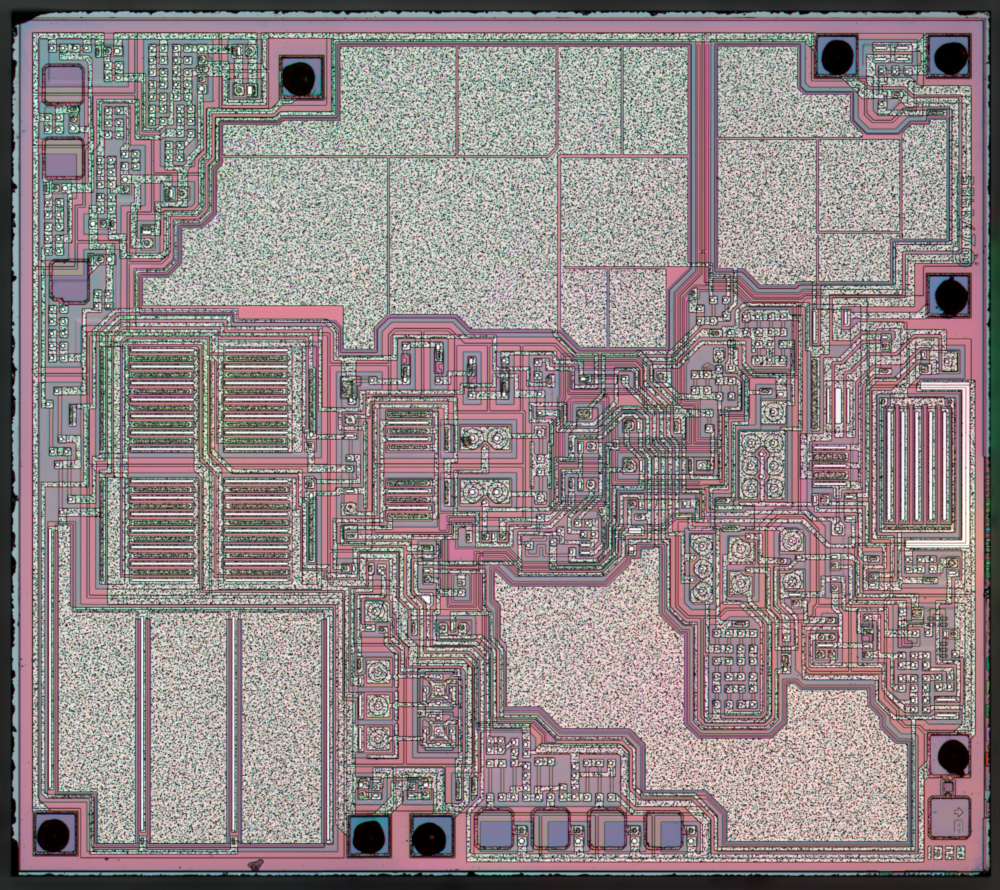
August 19, 2018
August 13, 2018
Phillips NE564N - PLL : weekend die-shot
This is another early and widely used PLL. Unlike CD4046 it can operate at whopping 50MHz.Die size 2332x1519 µm.
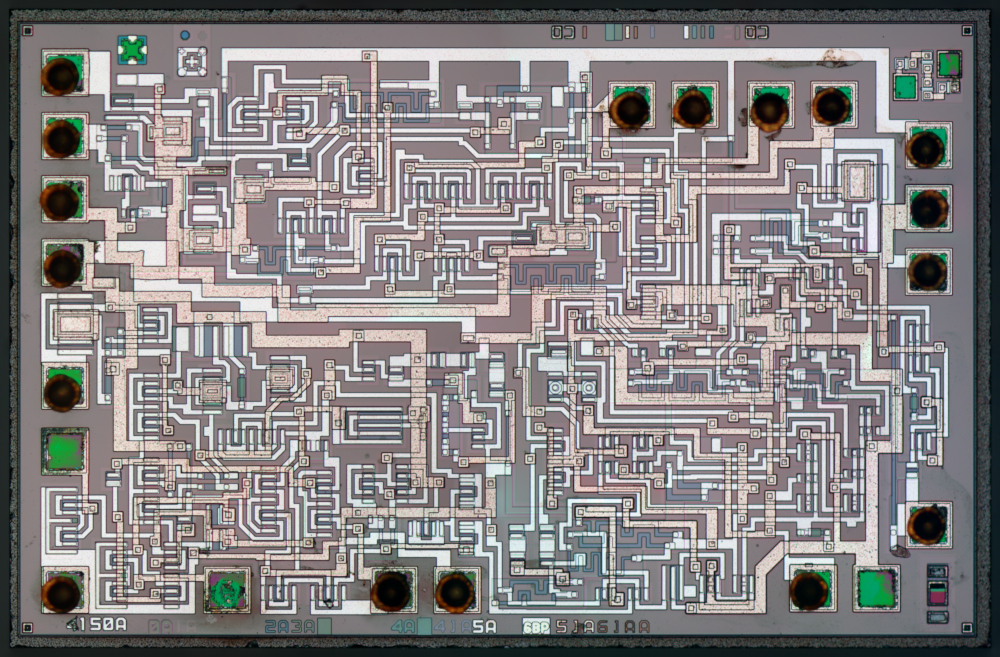
July 29, 2018
July 21, 2018
Ti CD4046BE - CMOS PLL / Oscillator : weekend die-shot
We used to think that 4000-series or 7400-series standard logic are all relatively simple ICs. Ti CD4046BE is probably the most complex of these - It's a PLL with internal VCO and even zener voltage reference for external voltage regulator. It could still be useful today, if you're fine with it's 1.4Mhz frequency limit.Die size 2271x2007 µm.
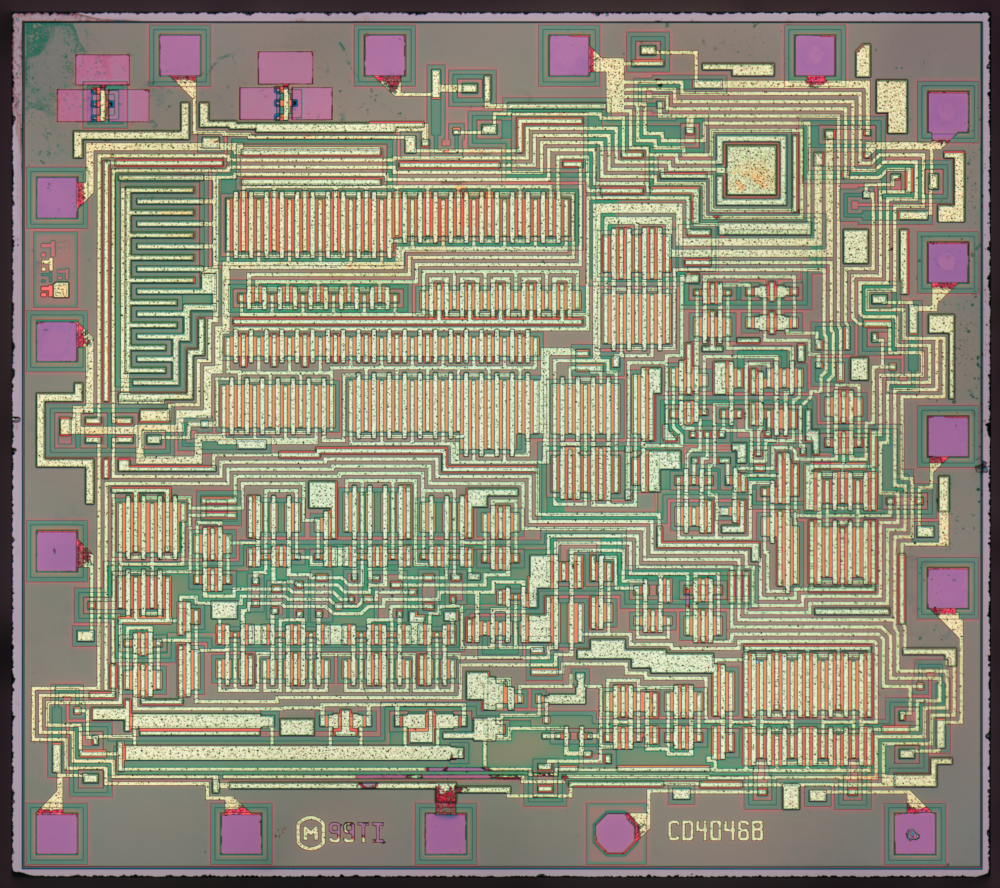
Metal etch photos are added
Read more →
July 20, 2018

